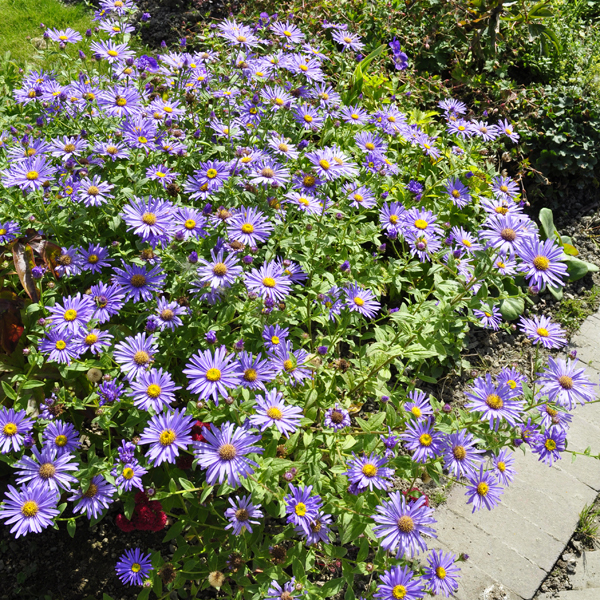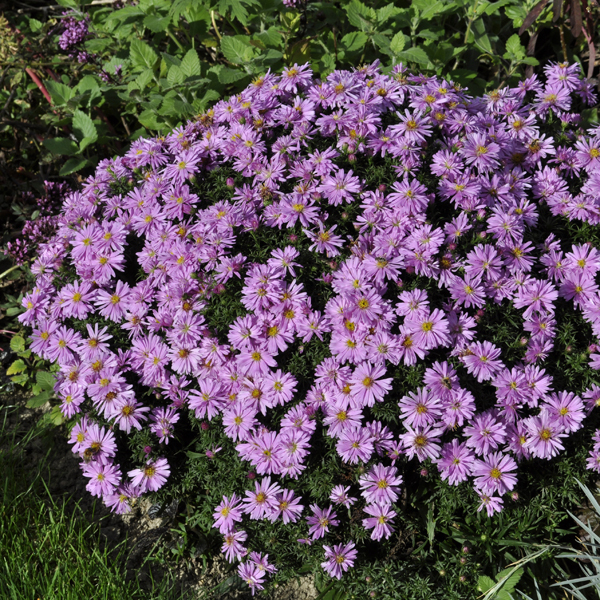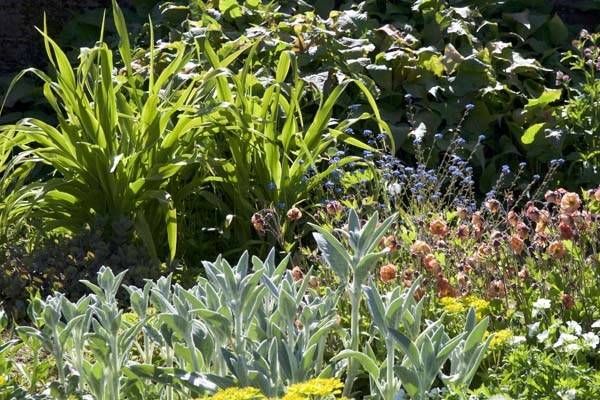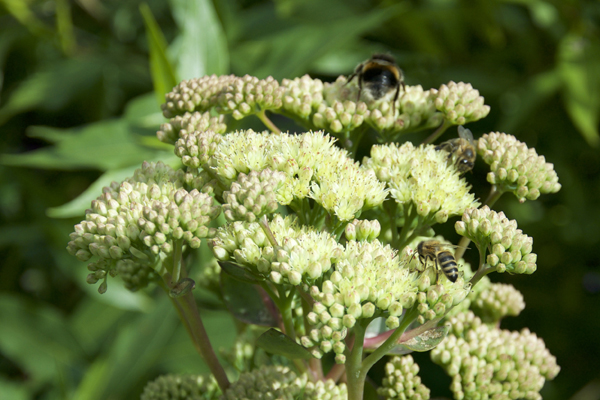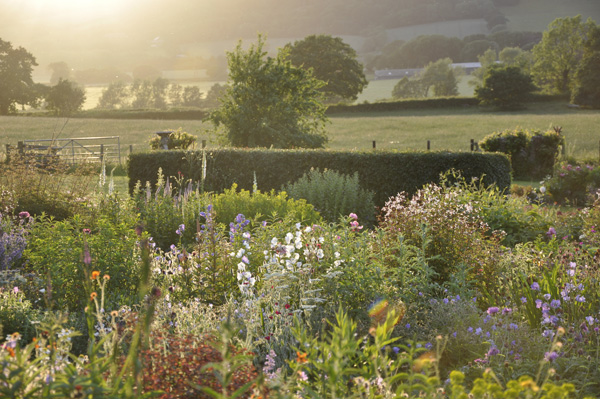Aster
In recent years some of the Latin names of these colourful late summer and autumn blooming perennials have changed to include amongst the most difficult names in botanical terminology, including Symphyotrichum and Galatella to list are just a few of the new names given to Asters. However, when first documented by European botanists they used different names, and as botanical convention goes, they are now being listed by (most) nurseries under this original title. For most gardeners they are still known as Asters, or Michaelmas Daisies and New England Daisies. A must for the autumn border, most garden asters originate from the United States, while other less commonly grown asters come from Europe and Asia.
The Differant Types of Asters
New England Asters (below) are now Symphyotrichum (as are Michaelmas daisies) carry the flowers in sprays on ultra stiff stems with hairy, disease-resistant, mid-green leaves. Most are very tall therefore they are best grown at the back of a border. Having said that, we do sell at least one short variety called 'Purple Dome'.



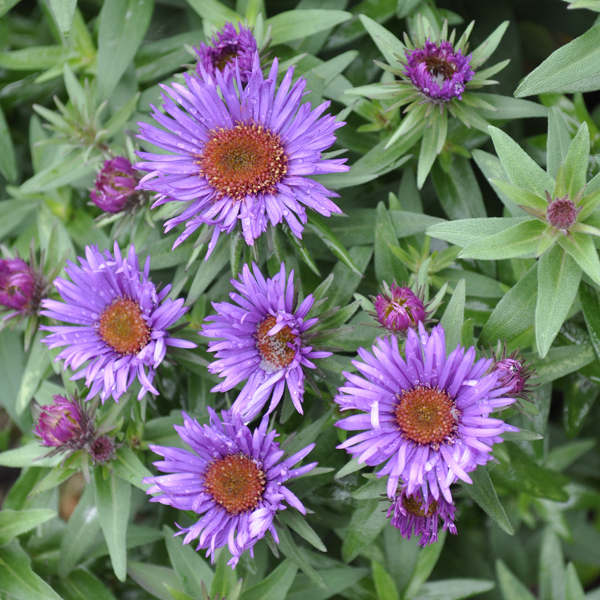
Left to right: Aster novi-angliae 'Harrington Pink', A. novi-angliae 'September Ruby', A. novi-angliae ' 'Herbstschnee', A. novae-angliae 'Purple Dome'
Michaelmas daisies have been grown in gardens for decades, the cheerful flowers, which can be single, semi-double or double, range from white to purple. Many vareities were raised in the UK during the middle of the 19th century. More versatile than New England asters, varieties range in height from 30cm high up to 120cm.


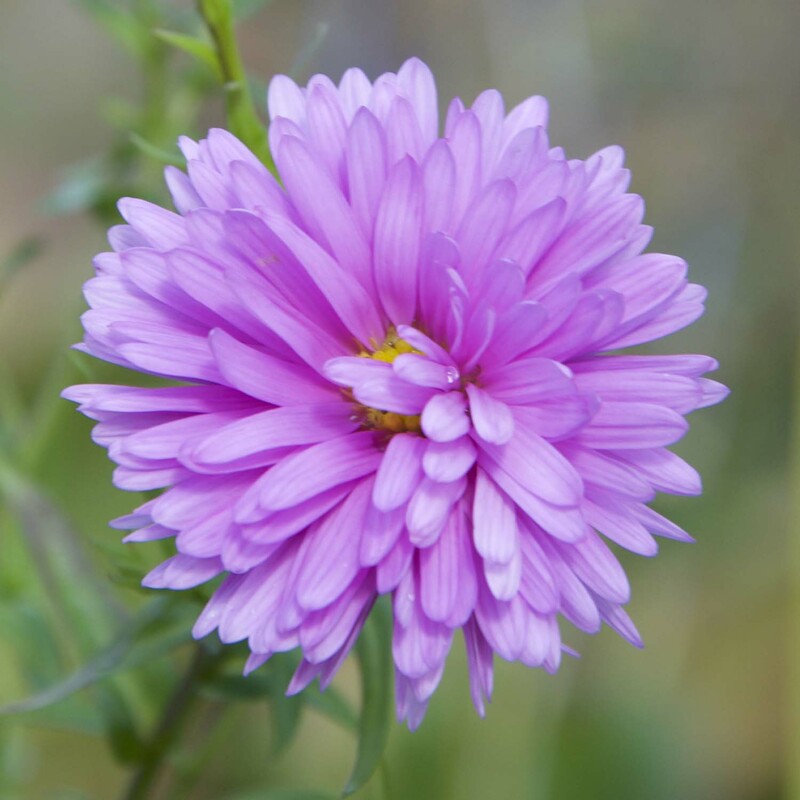

Left to right: Michaelmas Aster novi-beglii 'Fellowship', A. novi-beglii 'White Ladies', A. novi-beglii 'Patricia Ballard', A. novi-beglii 'Winston Churchill'
Small Flowered Asters The blooms of Michaelmas daisies and New England Asters tend to be quite big compared to those of this lovely free-flowering group. The stems, in common with all asters, are stiff and because the flowers are so small they are more numerous. The flower colour is limited to white and lilac, but the centres can become so big the blooms look pink. One delightful aspect of these asters is the colourful stems and leaves on many varieties can be so dark they are almost black, providing a border with colour for many months before the flowers open.
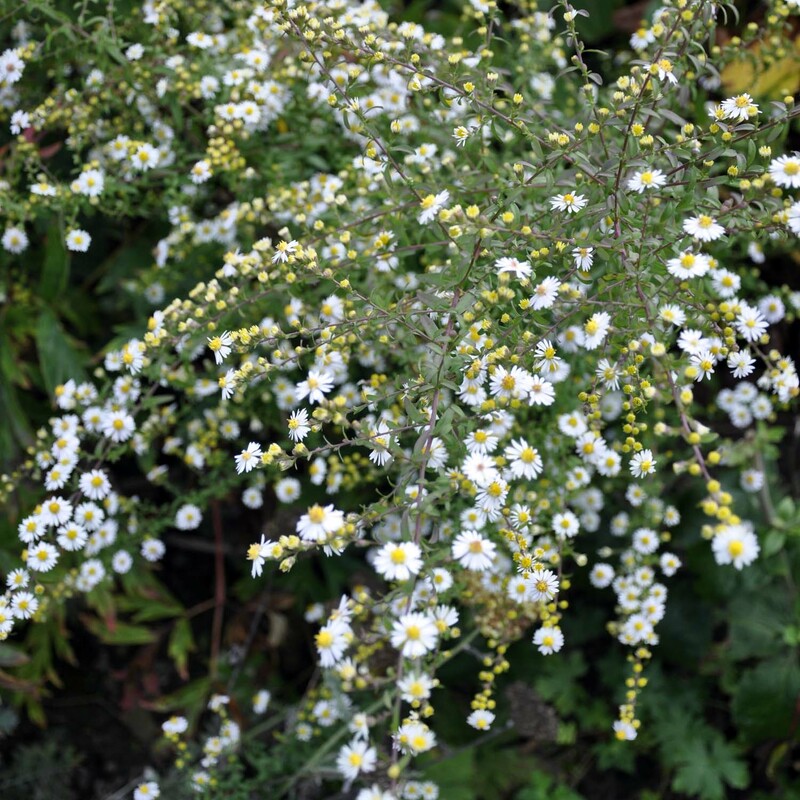
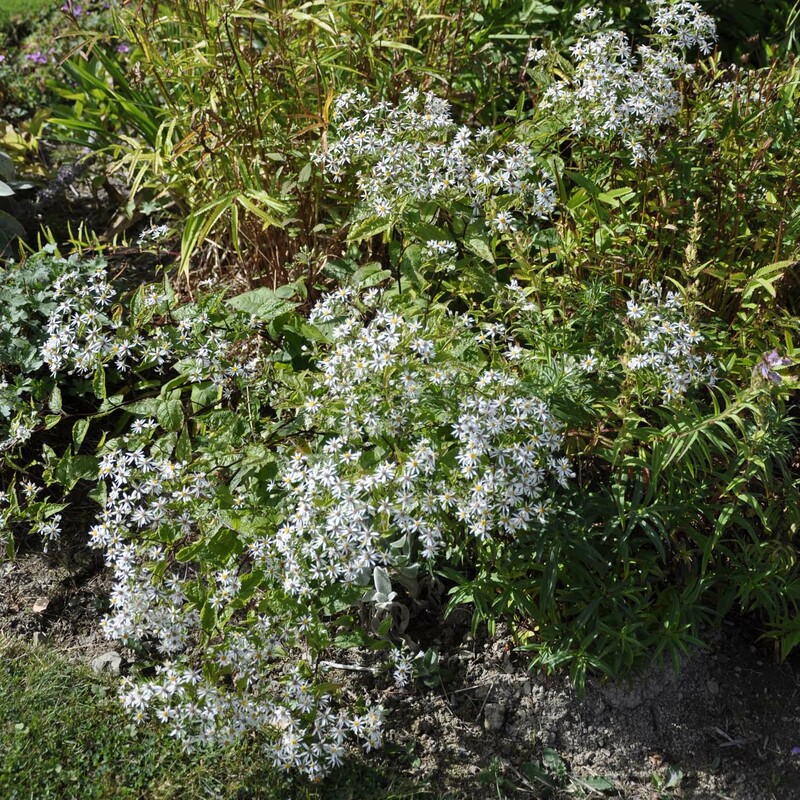


Left to right: Small flowered Asters: Aster ericoides 'White Heather', Aster divaricatus, Aster 'Vasterival', Aster 'Little Carlow'
Aster Flowers
Shaped like a daisy, the flowers vary greatly in size. In colour they tend to be in the blue/lilac, purple or white brackets, but there is also a good choice of pink flowered varieties that vary in tone from pale pink to vivid fuchsia. There are no yellow or true red varieties. Some blooms are as small as a 5 pence piece, others are bigger than a 50 pence piece. The varieties with the smallest flowers, such as Aster lateriflorus types tend to open along the flower stems, whereas the blooms of the larger flowered Asters are borne in clusters at the top of the flower stems.
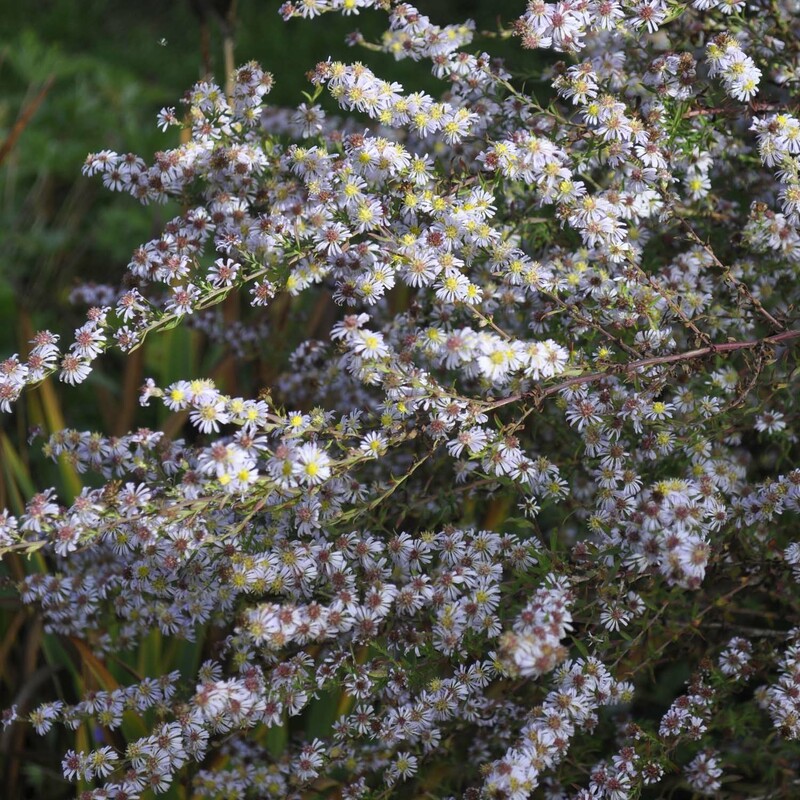

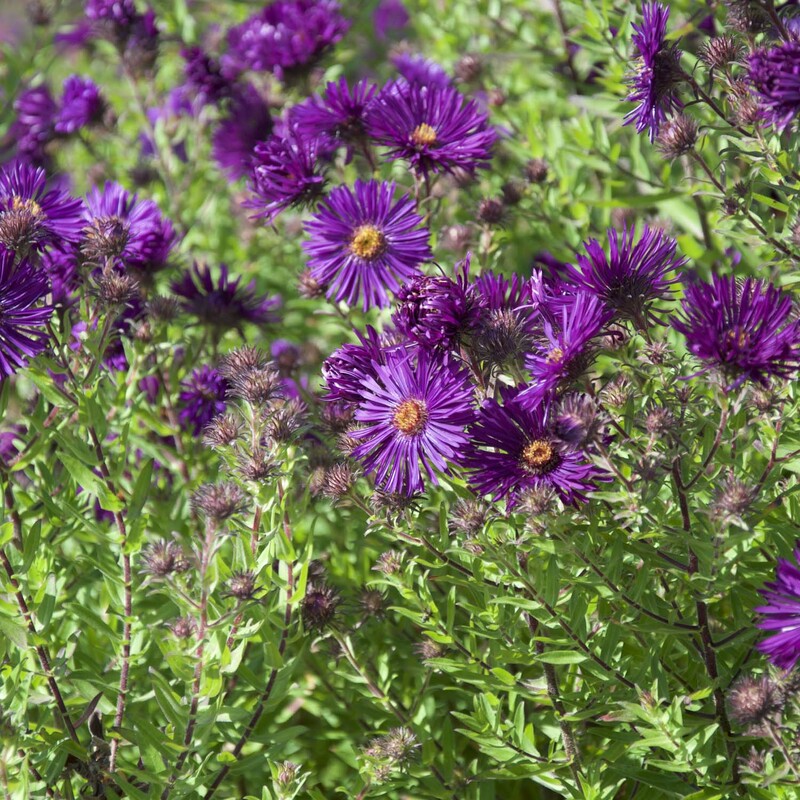
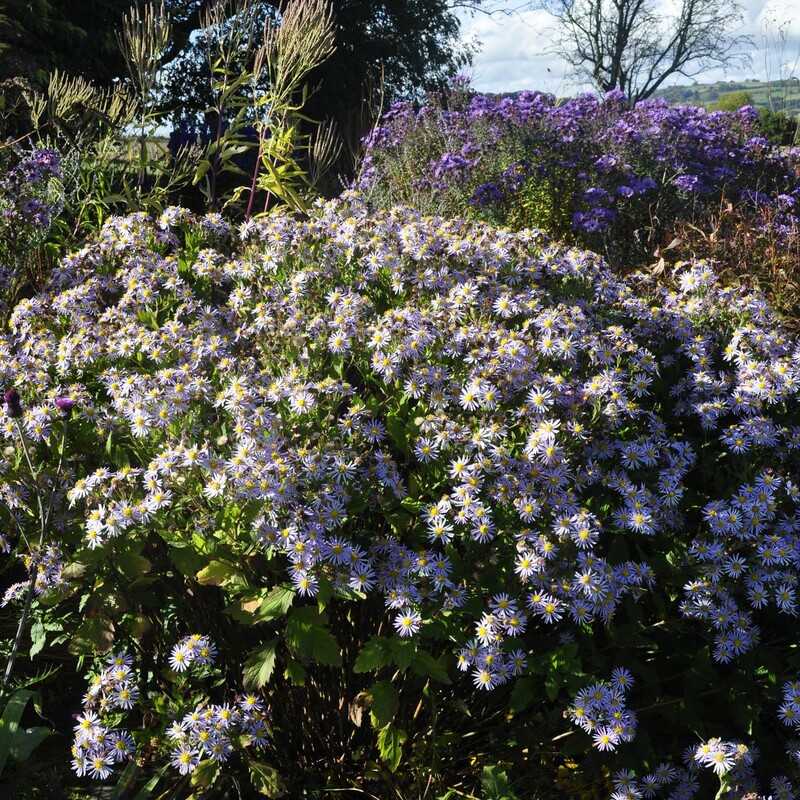
Left to right: Aster ericoides 'Erlkönig', Aster laeve 'Glow in the Dark', Aster novae-angliae 'Helen Picton', Aster laevis 'Bluebird'
Aster Leaves
Asters are leafy plants. All specie and varieties of Aster carry the leaves up the flower stems, which can be green or near black, an attractive feature that makes these plants even more valuable in the garden. The foliage can be tiny, some are glossy, while others are quite furry. Those plants with furry and small leaves are less likely to suffer from mildew, a problem that can disfigure, but never kills a plant. The shape of the clump will vary according to the flower stems. Aster novi-angliae types are thick and very upright, while others such as Aster x frikartii, A. pyrenaeus and A. x herveyii will arch gently to form a neat mound that is covered with blooms during the flowering period. The more upright varieties, while being handsome and perfect for the back of a border, can be rather bare at the bottom of the clump.
Where To Grow Asters
Asters like a well-drained soil that is not too acid. Luckily they don’t mind a clay soil as long as it does not remain wet for any length of time. In my experience most are happy growing in a bit of light shade for part of the day, but generally they do like as much sun as possible. There is a aster for every situation in a garden. Some are so ground hugging they are perfect for rockeries, others are so tall they fit perfectly a location at the back of a border.
Left to right: Aster 'Vasterival', Aster novae-angliae 'James Richie', Aster x frikartii 'Monch', Aster 'Wood's Pink'
What To Grow With Asters
Tall asters, make perfect partners for other tall late season blooming perennials including Aconitum, grasses and Eupatoriums. These tend to rigid plants, whereas shorter Asters are more likely to form domes. Some domed Asters are so frothy they will break the rigidness of tall grasses such as Molinia or Miscanthus. They will also complement the short, spiky flowers of Persicaria, a group of plants that blooms well into autumn. Some of the most useful Asters are also the shortest. Low-growing and mounding, they blend perfectly with later blooming plants like Sedum and Origanum.


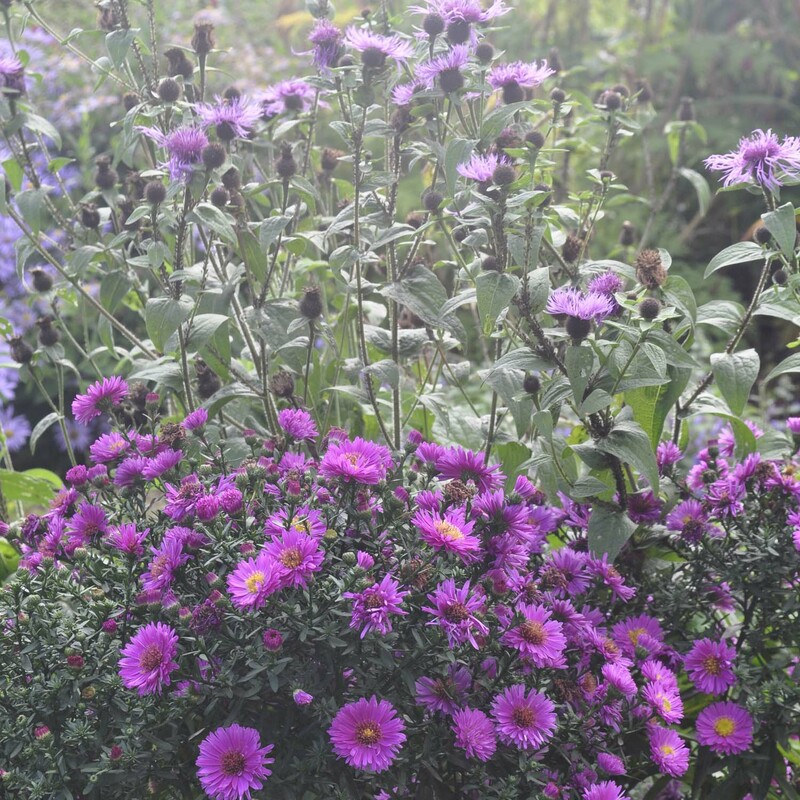

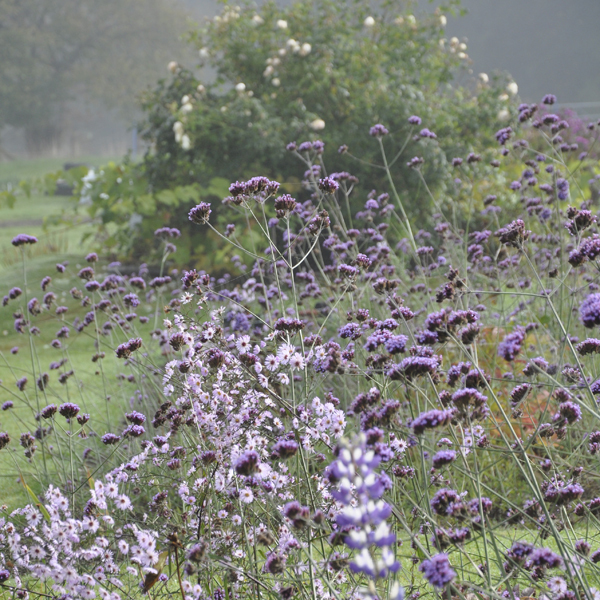
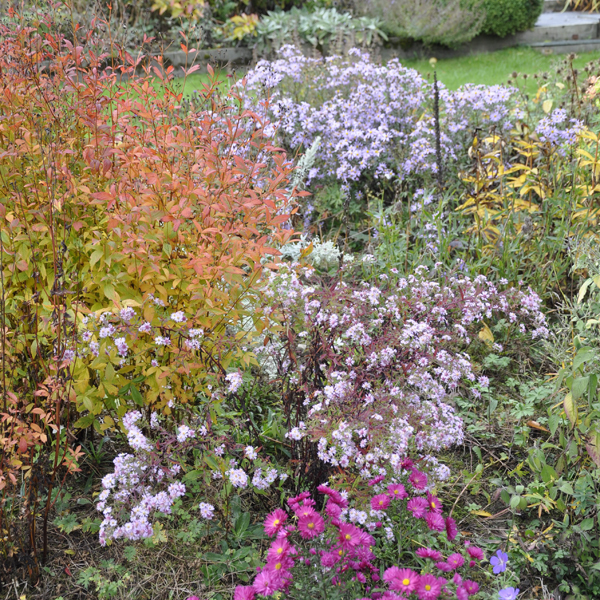
Top left to right: Aster pyrenaeus 'Lutetia' & Sedum 'Red Cauli', Aster x frikartii 'Jungfrau' with Veronicastrum, Aster novi-belgii 'Starlight' with Centaurea 'Caramia', Aster na 'Miss K E Mash' with Aconitum x arendsii
Bottom left to right: Aster 'Vasterival' with Verbena bonariensis, Aster nb 'Starlight' (front), Aster 'Coombe Fishacre' (centre) and Aster pyrenaeus 'Lutetia' (top)
Caring For Asters
Staking
Asters rarely need staking, although if grown in a very windy spot some taller asters might topple over. In this situation it may be better to grow stiffly upright New England Asters or plump for shorter varieties.
Dividing
Most asters grow rapidly and therefore need dividing every 3 to 4 years to maintain vigour. This includes the popular Michaelmas daisies and New England Asters. This is done when the plant is dormant between November and March, will also help to prevent mildew that can occur on Michaelmas daisies (Aster novi-belgii types). Amellus and x Frikartii types take longer to establish and can be left for longer before division.
Mildew
Asters with shiny leaves such as Michaelmas daisies (Aster novi-belgii types) are prone to mildew and can be seen when white is dusted over the leaves. Mildew generally occurs when the weather is warm and damp and can be restricted by not crowding the plant. As mentioned above dividing established plants will help reduce the risk is mildew, but if this cannot be done spraying your plant with a mildew spray suitable for roses should help.
New Names For Asters
Sadly, in 2015 Asters suffered at the hands of botanists. Almost all types of asters from the United States were lumped under one or two new names, while many others from around the world stayed as aster. I don’t object to this, but what I do think is ridiculous is the awful, unpronounceable name they have re-Christened these wonderful Michaelmas Daisies and New England Asters.
Here are some examples of commonly available Asters and their new names:
Aster acris is now Galatella sedifolia
Aster cordifolius is now Symphyotrichum cordifolius
Aster ericoides (as in ‘Pink Cloud’) is now Symphyotrichum ericoides
Aster herveyi is now Eurybia x herveyi (not so long ago this was Aster macrophyllus ‘Twilight’ and a name that still crops up on nursery lists.
Aster laterifolius (as in ‘Horizontalis’) is now Symphyotrichum laterifolius
Aster novae-angliae (New England Aster) is now Symphyotrichum novae-angliae
Aster novi-belgii (Michaelmas daisy) is now Symphyotrichum novi-belgii


